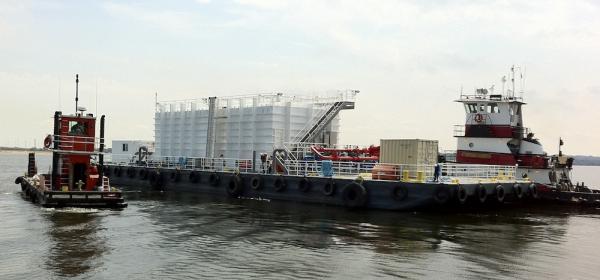The Port of Baltimore is known for its close proximity to U.S. manufacturing centers making it the busiest Ro-Ro port on the East Coast. But the port also smack dab in the center of the research and government hub around Washington, D.C., making it a natural location for marine research.
There are algae scrubbing experiments at the port’s terminal in Dundalk, aquatic grass mats being tested in the Inner Harbor, and several ongoing dredge material reuse experiments. One of the most interesting projects, though, is also the one with imminent far-reaching consequences for the shipping industry.
On a quiet pier on the Patapsco River, scientists from the University of Maryland Center for Environmental Science are working with colleagues from the Smithsonian Institution and other academic research facilities to test new technologies for treating ballast water in ship tanks.
Ballast water management is currently regulated via discharge. The effort to keep destructive invasive species in check has the IMO, EPA and Coast Guard creating standards that require treatment of water onboard ships to kill off algae, bacteria and small plankton, similar to drinking water treatment. The trouble is, ships go around the world picking up water with all sorts of different salinity levels, temperatures and turbidity. In order to treat the water before discharge, you can’t just toss in a barrel of chlorine and expect it to be cleared up. Engineers are creating new technologies to treat the water and someone need to independently figure out if any of these systems work before shipping lines start spending million of dollars to install them. That is where the Marine Environmental Research Center (MERC) barge comes in.
The 155'x50' retired oil barge was converted for the team by Baltimore-based McLean Contracting. On the deck, two tanks are made to mimic ballast tanks on a ship with 300-cu.-meter per minute pumps. The structural members of the tanks are external so nothing is left behind when the pump out is complete.
Each March, vendors who think they have a viable solution to the ballast water treatment problem, can install their system on the barge. “We then test the system in various parts of the Bay in different salinity levels by moving the barge around,” said Dr. Mario Tamburri, who leads the team. “We also look at the reliability of the system.”
At the end of the day, the systems that pass the MERC barge tests will be approved by the Coast Guard and will likely become the industry standard.





